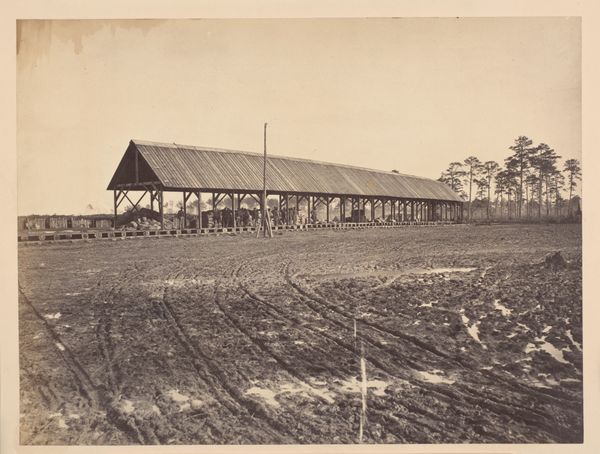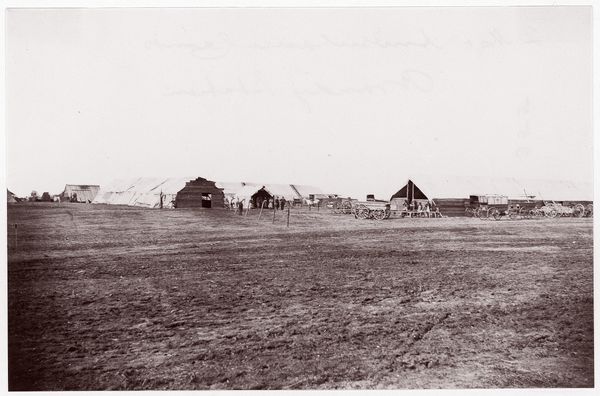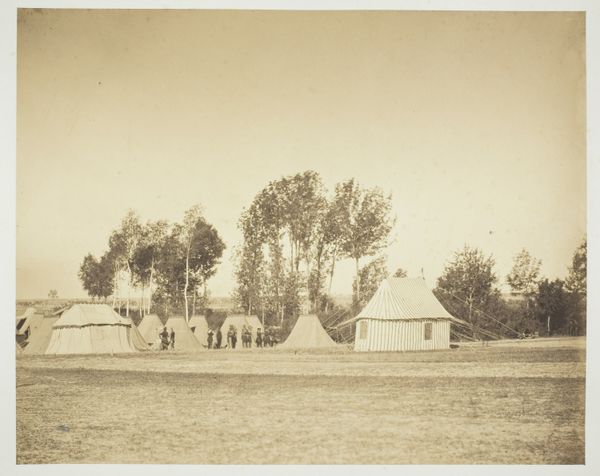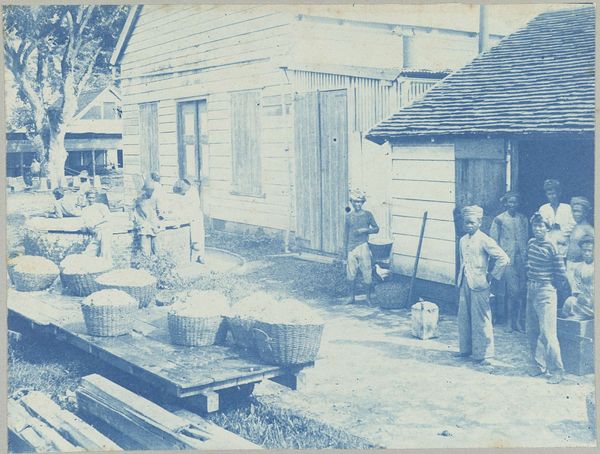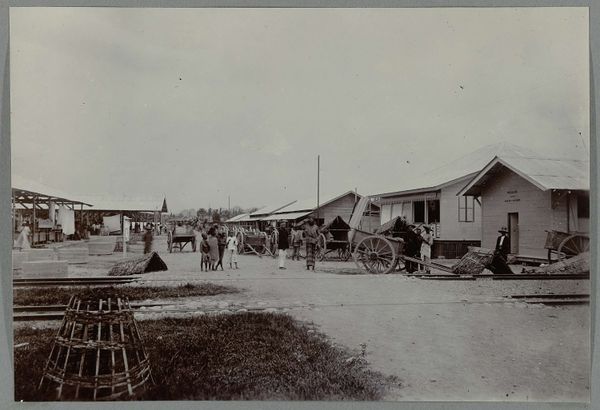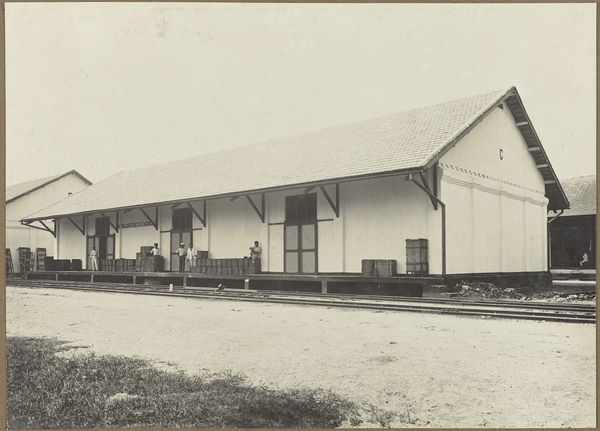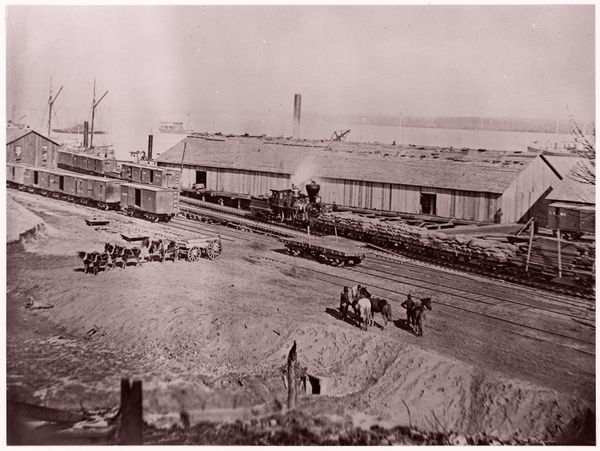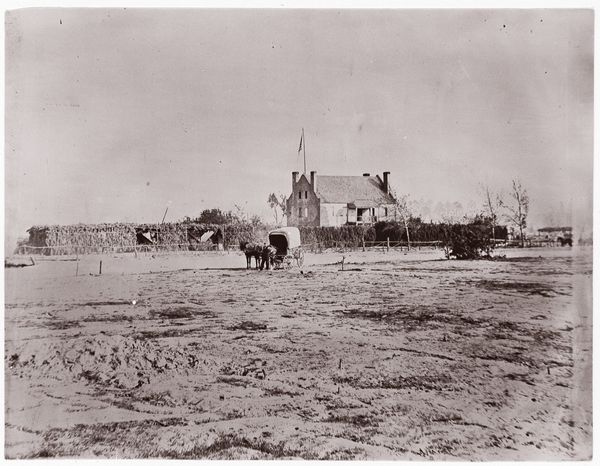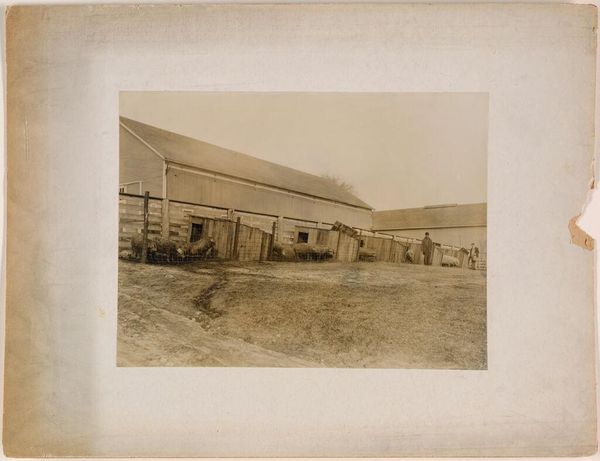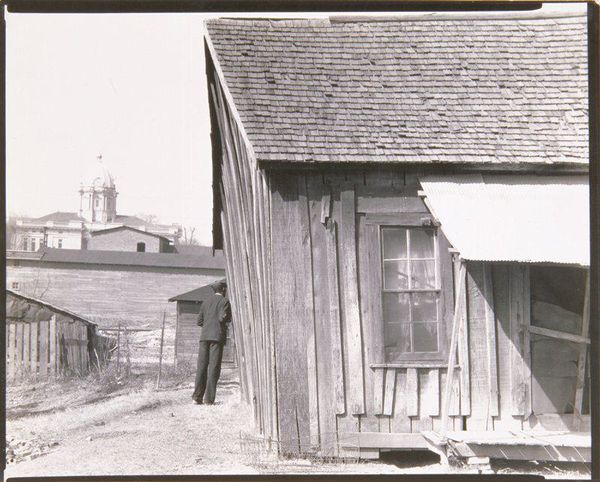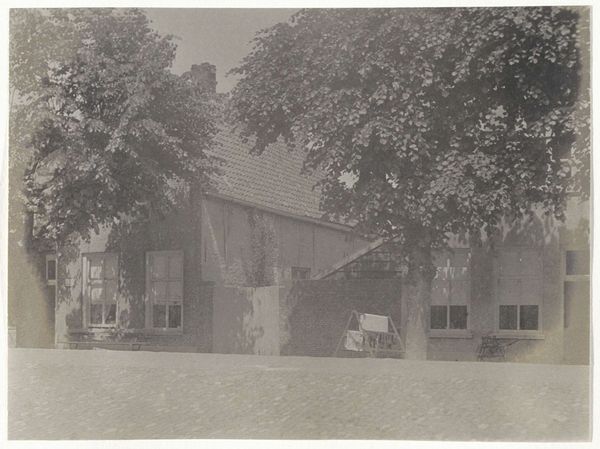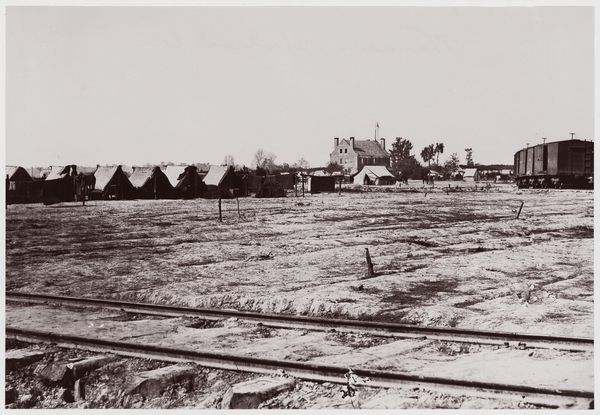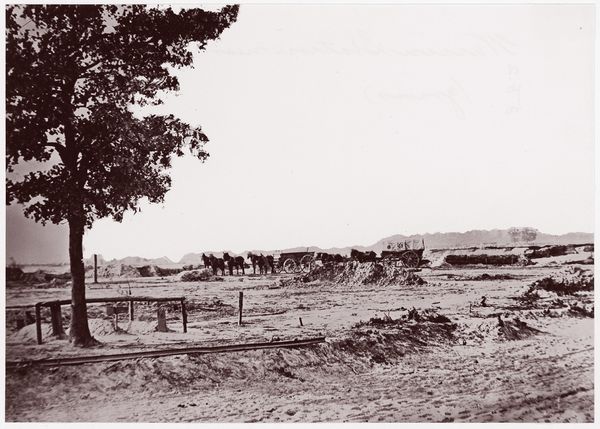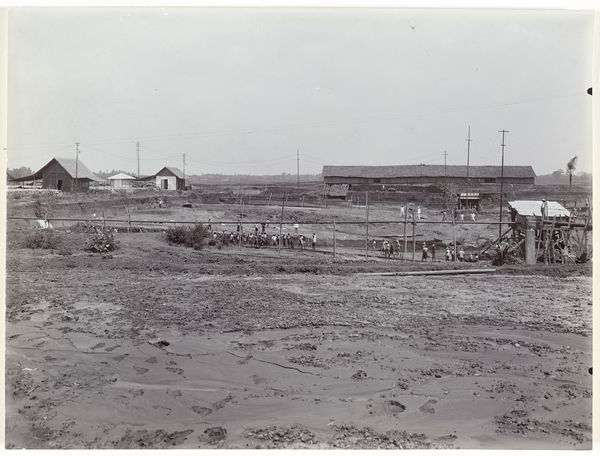![[Commissary Department, City Point, Virginia] by Andrew Joseph Russell](/_next/image?url=https%3A%2F%2Fd2w8kbdekdi1gv.cloudfront.net%2FeyJidWNrZXQiOiAiYXJ0ZXJhLWltYWdlcy1idWNrZXQiLCAia2V5IjogImFydHdvcmtzL2M3MDM5MmVmLTE5ZjgtNGMwYS05MmRkLTliZjFlNGE5ZTJlNS9jNzAzOTJlZi0xOWY4LTRjMGEtOTJkZC05YmYxZTRhOWUyZTVfZnVsbC5qcGciLCAiZWRpdHMiOiB7InJlc2l6ZSI6IHsid2lkdGgiOiAxOTIwLCAiaGVpZ2h0IjogMTkyMCwgImZpdCI6ICJpbnNpZGUifX19&w=3840&q=75)
[Commissary Department, City Point, Virginia] 1861 - 1865
0:00
0:00
photography, gelatin-silver-print
#
black and white photography
#
landscape
#
photography
#
horse
#
gelatin-silver-print
#
monochrome photography
#
history-painting
Dimensions: 16 x 22.9 cm (6 5/16 x 9 in. )
Copyright: Public Domain
Curator: Andrew Joseph Russell captured this image, entitled "[Commissary Department, City Point, Virginia]," sometime between 1861 and 1865. Editor: The starkness of this black and white photograph is immediately striking. It almost feels staged, everyone posed so stiffly. There’s a definite tension, a heaviness in the air. Curator: That heaviness, I think, comes from knowing the context. This photograph shows the supply depot at City Point, which served as a crucial Union supply hub during the Civil War. Looking closer, one notices not just the locomotive but also the individuals clustered in front of the commissary. This image demonstrates the organizational demands of war. Editor: It's fascinating to see how infrastructure shapes even what we think of as iconic or decisive moments. Who would think a simple building and rail line could have such influence over the conflict's progression? One must remember that so-called simple wooden buildings could be spaces of power, sites where decisions impacting lives were enacted. The arrangement almost looks to me as a depiction of social class. Curator: Precisely! Photography became a tool, not just for documenting events, but for shaping public perception and recording history itself. Editor: It raises the issue of whose stories get visually recorded. Were those visible on the steps mostly men, or are other genders or roles not present within this photo? It appears many Black laborers were omitted here and the contributions to these infrastructures seem invisible. Curator: You are pointing towards something crucial – absences within the frame are just as potent. This photograph, with all its purported realism, reflects choices and biases, consciously or unconsciously, in both the act of image making and also in how we, later, consume it. Editor: That final observation causes a lot to reflect upon when one gazes over "history". I now leave here with more questions than answers. Curator: And perhaps, that’s the point, isn’t it? To continuously question, to reinterpret, to look beneath the surface of seemingly straightforward historical narratives.
Comments
No comments
Be the first to comment and join the conversation on the ultimate creative platform.
